Contents
Cherry Tyutchevka is one of the best options for growing in the middle zone of the country. A winter-hardy variety with low susceptibility to fungi – the causative agents of characteristic sweet cherry diseases. Due to its properties, Tyutchevka is becoming popular among gardeners.
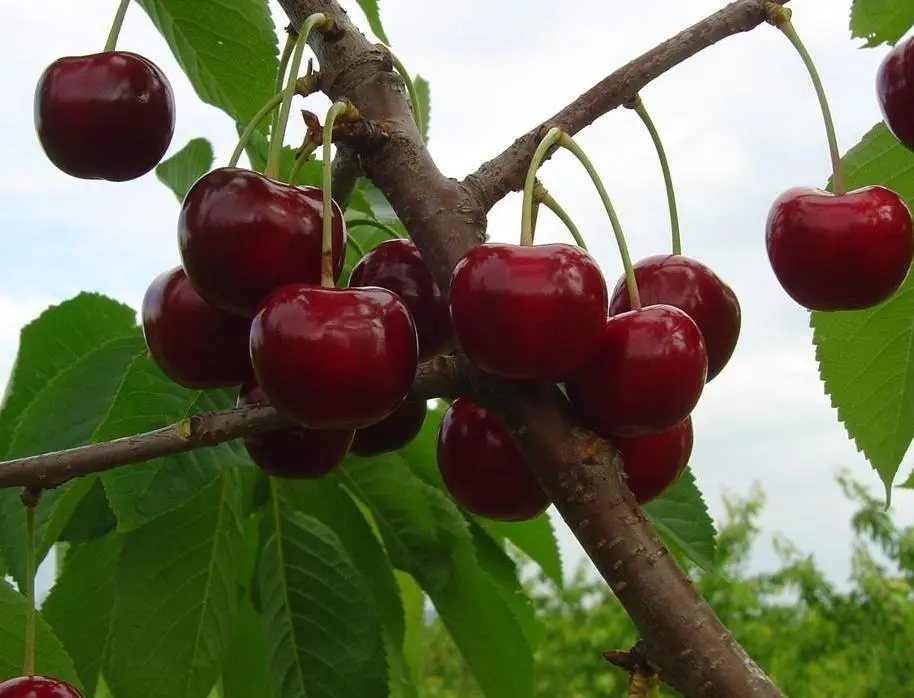
History of variety breeding
A successful breeder from the All- Research Institute of Lupine in Bryansk, M.V. Kanshina, bred the Tyutchevka cherry on the basis of seedling 3–36 and the well-known variety Red Dam. After testing, cherries have been included in the State Register since 2001.
Description of Tyutchevka cherry
This variety is recommended to grow in the central regions.
The compact tree of the Tyutchevka variety grows quickly, rises to medium size. The natural crown is spreading, rounded, without thickening. Short strong shoots are covered with a characteristic warm brown bark. Fruit buds are ovoid, and vegetative buds are in the form of a pointed cone. The large leaves of the Tyutchevka sweet cherry are oval-elongated, sharpened towards the top, serrated at the edges, folded in a boat. Attached to thick short petioles. The top of the leaf blade is shiny, dark green, not rough.
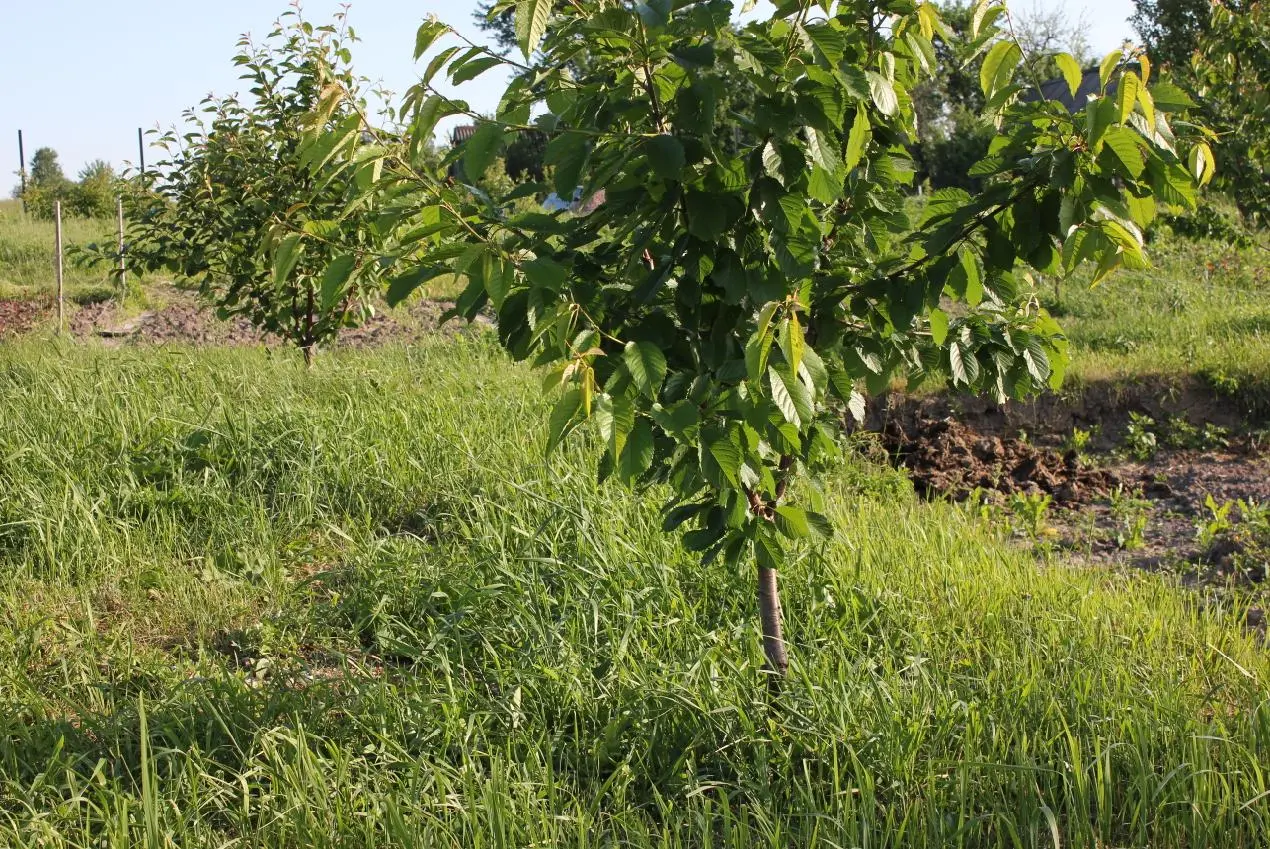
On the bouquet sprigs of the Tyutchevka variety, inflorescences of 4 flowers are formed with a white saucer-shaped corolla. This fruit placement yields up to 86% of the yield per tree. The remaining inflorescences are created on the shoots.
Rounded large fruits weigh an average of 5,3 g, reach 7,4 g, hang on strong short stalks. The tip is rounded, the funnel is medium, the height of the Tyutchevka berry is 2,2 cm, the width is 2,3 cm. The dense, but thin skin of the fruit is dark red, with dark integumentary specks. Cartilaginous dense pulp of cherries is also intensely red, juicy. When the berry breaks, light red juice is released. An oval stone weighs 6% of the mass of Tyutchevka berries – 0,3 g, it is not completely separated from the pulp.
The fruits of the variety have a special cherry aroma and a pleasant sweet taste. Tyutchevka cherry berries were rated very highly by tasters – 4,9 points.
Consumer properties of fruits of a variety are determined by their composition:
- 11,1–13% sugars;
- 18–20% dry matter;
- 0,4% acids;
- 13-13,6 mg of ascorbic acid per 100 g.
Characteristics of a variety
The qualities of wood and fruits suggest where it is better to grow cherries.
Frost resistance of the Tyutchevka cherry variety
During field trials and from the experience of gardeners, a good winter hardiness of the Tyutchevka variety was determined in the conditions of the Central Region: it tolerates up to 25 degrees below zero. Open branches freeze slightly at -35 ° C, but are regenerated in spring. In the case of winters with severe frosts, damage to trees was 0,8 points. Of the total number of kidneys, 20% died. But with return frosts down to -5 °C during the flowering period, 72% of pistils suffered.
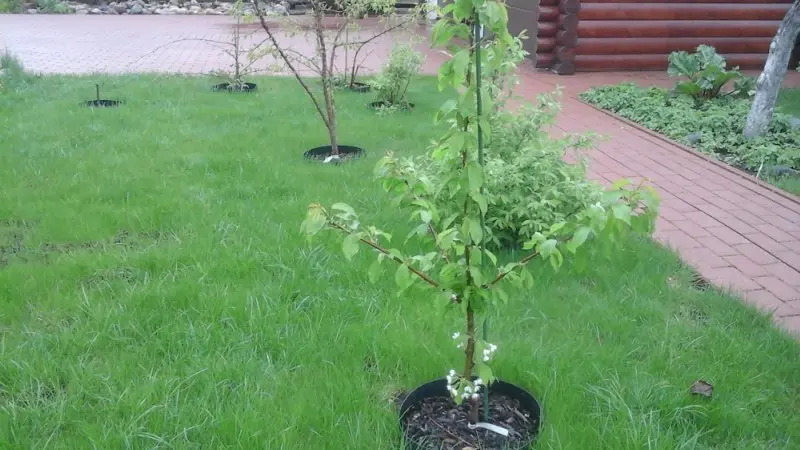
Cherry pollinators Tyutchevka
The variety begins to bloom in mid-late terms, in May. Cherry Tyutchevka is partially self-fertile. A bountiful harvest is harvested if there are such varieties in the garden or in neighboring areas:
- Ovstuzhenka;
- Bryansk pink;
- Brianochka;
- Jealous;
- Lena;
- Radica;
- Iput.
Other cherries will help in increasing the harvest of Tyutchevka, you just need to know the period of their flowering. Sweet cherries and neighboring cherries have a good effect on the yield, although there is no cross-pollination between species.
Ripe berries of the Tyutchevka variety begin to be harvested at the end of July – in August.
Yield and fruiting
Cherry Tyutchevka brings the first fruits from the fifth year of growth. After another five years, the tree fully bears fruit, creating up to 16 kg of berries annually. In large farms, 97 centners are harvested per hectare of this variety. The maximum yield of Tyutchevka reaches 40 kg per tree, or more than 270 q/ha. The tree bears fruit for 20 years.
Scope of berries
The fruits of the Tyutchevka variety are universal. They make delicious jams, compotes, jams. This is a wonderful vitamin dessert even in winter if the berries are frozen.
Disease and pest resistance
In selection, preference was given to seedlings that are most resistant to infection with diseases. As a result, the Tyutchevka sweet cherry is little susceptible to moniliosis, and the tree has an average susceptibility to clasterosporiosis and coccomycosis. If you follow the typical recommendations for garden care in spring and autumn, the tree will not suffer from pests either.
Advantages and disadvantages of the variety
Like all new varieties, Tyutchevka has a number of advantages:
- high and stable yield;
- excellent consumer performance;
- transportability;
- frost resistance;
- high resistance to fungal diseases.
The disadvantages of the Tyutchevka variety are insignificant, rather, these are common species features:
- the need to plant a pollinator variety for a good harvest;
- possible cracking of berries in the rainy period during ripening.
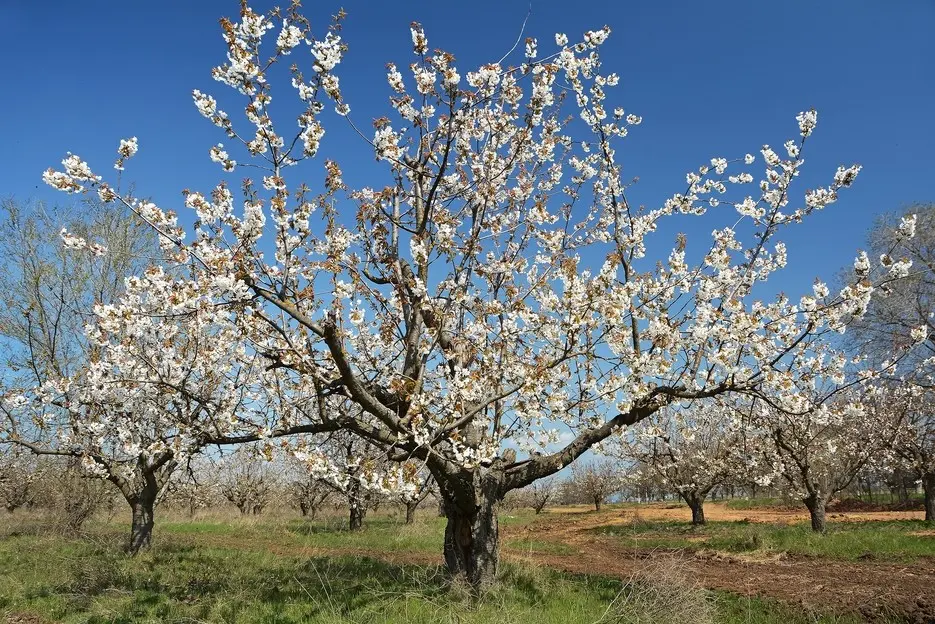
Planting and caring for Tyutchevka cherries
Growing a variety is no different from caring for other cherries.
Recommended dates
In the central regions, Tyutchevka is planted in the spring, when a seedling with open roots takes root more easily. Trees in containers are moved at any time of the warm season, but spring and early summer are still preferable to autumn.
Choosing the right place
Selected sweet berries ripen on a tree that grows in a plot that is fully illuminated by the sun and protected from the prickly northern winds by buildings, a high fence or a garden array. They retreat from such protection by no less than 2-3 m. The soil should be well-drained, with neutral acidity, fertile and loose.
What crops can and cannot be planted nearby
- The best neighbors of Tyutchevka cherries are other varieties for pollination or cherries, which favorably affect fruiting.
- Berry bushes are also placed nearby, controlling the spread of shoots.
- Nightshade crops should not be placed near young cherries.
Selection and preparation of planting material
Carefully choose 1-year-old or 2-3-year-old seedlings, in which the crown has already begun to form in the nursery:
- the stems are elastic, the buds and roots are fresh;
- bark without scratches and signs of disease;
- roots are strong, with 3–4 powerful shoots 20–25 cm.
A seedling with open roots is placed in a clay mixture for 6-8 hours before planting. The tree is also soaked in a container, placing it in a large container so that the earthen lump comes out freely and the roots straighten out.
Landing algorithm
- Pits measuring 60–80 by 80 cm are dug in advance, having prepared a thick layer of drainage and a substrate so that it cakes.
- A peg supporting the seedling is installed near the center of the pit.
- The roots of the seedling are straightened on a mound of planting substrate and covered with prepared soil.
- The root neck protrudes 5 cm above the ground.
- The soil is trampled down, a groove is made around the perimeter of the irrigation pit.
- 10–15 liters of water are poured into the trunk circle and the earth is mulched.
- Carry out the necessary pruning.
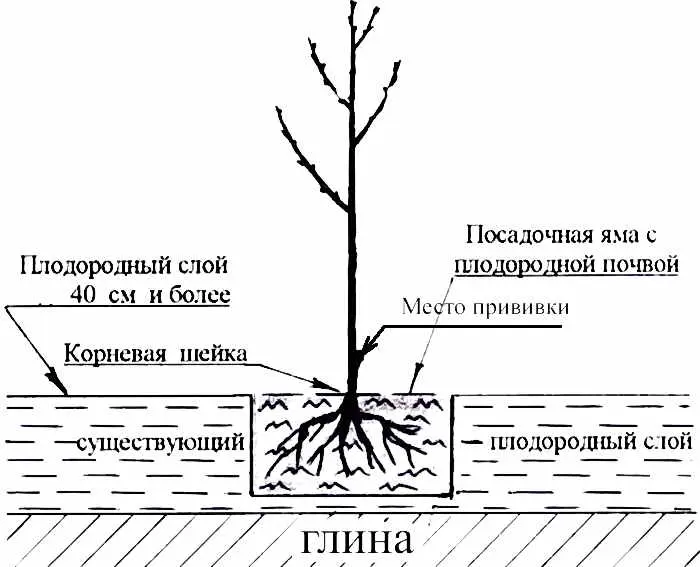
Aftercare for cherries
Growing a fruit tree without much difficulty. The trunk circle is cleared of weeds, the soil is loosened after watering, if there is not enough natural precipitation. It is especially important to moisten the soil under the cherry in the phase of buds and ovaries, in the fall – in preparation for winter. But in case of heavy rains during the fruit ripening period, the soil under the tree is covered with a film to protect the berries from excessive moisture.
They are fed with convenient complex preparations and organic matter. In early spring and autumn, damaged branches are removed. Young trees are protected from rodents and frost with a net and a thick layer of paper or agrotextile.
Diseases and pests, methods of control and prevention
Tyutchevka is a special variety that resists infection with those fungi that cause significant damage. Enough autumn cleaning of leaves, stripping the bark and digging the site.
In early spring and after flowering, preventive spraying with fungicides is carried out.
Prevent the appearance of pests by proper care of the garden, impose trapping belts. If a high number of insects is noticed, insecticides are used.
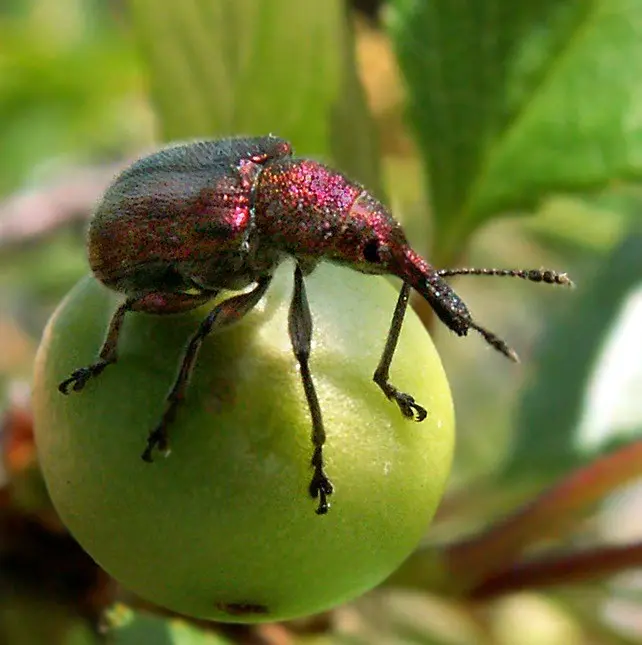
Conclusion
Cherry Tyutchevka is the pride of the domestic selection. An unpretentious productive variety created for the conditions of the middle lane, resistant to stone fruit diseases. Its acquisition will please the gardener with regular fruiting and tasty berries.









